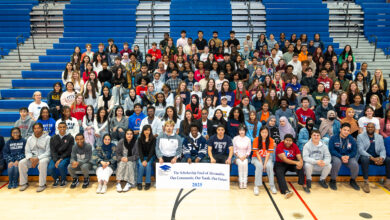Alexandria School Adding Robotics/Coding to K-8 Curriculum

ALEXANDRIA, VA – At Browne Academy, robotics and coding will soon be a consistent part of the K-8 curriculum. Starting next year, lower school teachers will integrate the subject into their classroom activities, and middle school students will have the option to take robotics/coding as electives.
The school is hiring a director of innovation to oversee its efforts. This person will be the visionary leader of the innovation center and will also teach innovation in the lower school; assist middle school teachers with technology integration; serve as an instructional coach for K-8 faculty; teach coding, robotics and innovation center electives in middle school; and mentor and coach middle school competitive robotics team(s).
In preparation for this program enhancement, 10 faculty/staff members recently participated in a five-day training course with a robotics instructor from Carnegie Mellon University. These teachers experienced hands-on coding with VEX EDR equipment, a robotics program designed specifically for middle to high school level students to learn engineering, coding, robotics and the design cycle. The robots can be programmed to do tasks, solve problems or complete an obstacle course. As the training progressed, Head of Middle School Beth Gryczewski noticed that “these robots can be used to provide hands-on learning opportunities in individual math and science classes as students work through units like proportions, geometry, ratios, and understanding concepts like pi, circumference, diameter and many other math concepts. This is a program that can have many real-world uses outside of the robotics classroom.”

Teachers who took part in the training are already planning how to integrate what they learned into their curricula. Third grade teacher Robyn Laha reflected, “One of the really interesting connections I made was through the process called pseudo-coding, which breaks down the steps that need to be taken for the robot to accomplish its task. Pseudo-coding starts with a bare-bones outline. You then refine the plan that ultimately leads to the robot doing what you want it to do. My aha moment came as I realized that this could really be applicable to teaching the writing process to the children. You start with your big-picture story and then go back and add more and more detail until you have the finished written piece. Whether in robotics or language arts, pseudo-coding teaches students to use a step-by-step process in order to solve a larger problem.”




